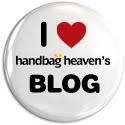Can you differentiate the definition of a backpack versus a baguette, wristlet versus a tote or a sling bag versus a shopper? If you answered no, you are not alone! Handbag terminology can be confusing. Large, medium and small designer and non-designer handbags have dozens of names in relation their usage, shape, size, closure type and more.
Large bags, for example, are often included in the categories of hobos, totes or shoppers. A hobo is typically a large bag with a zipper top closure and a shoulder strap. A tote is a large, rectangular, two-handle bag with an open or zippered top. A shopper is more often than note another name for a tote.
Medium size bags much as satchels and bowlers are also popular. A satchel is a handbag that closes at the top and features a top carrying handle. A bowler refers to a round handbag with a shape that resembles a bowling ball.
Small bags, with names such as clutches and baguettes, are used often, particularly for more formal events. A clutch is a small and thin hand-held bag, usually lacking a shoulder strap, while a baguette is a small handbag with a narrow shape, resembling a loaf of French bread.
Knowledge of material treatment terms can also become complicated. Examples of frequently used surface treatment terms include embossed, or a designed imprinted into leather or synthetic leather most often simulating an animal skin; croc, or an embossed pattern simulating the skin of a crocodile; and antiqued, a type of surface treatment that has a rubbed-off, worn appearance.
Further explore the definition of these words and more in our glossary of common purse and handbag terminology!
There’ll be a quiz next week.













